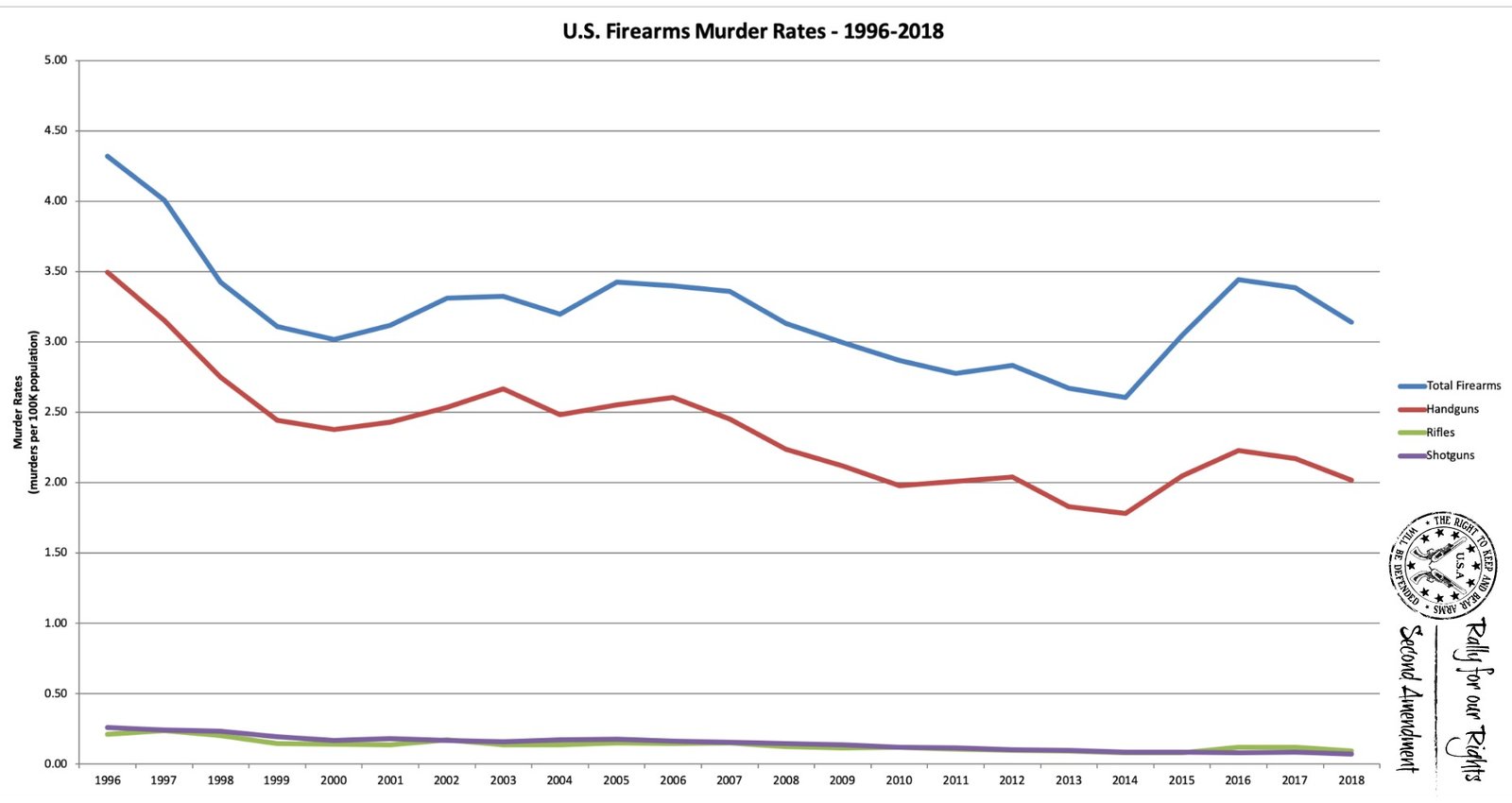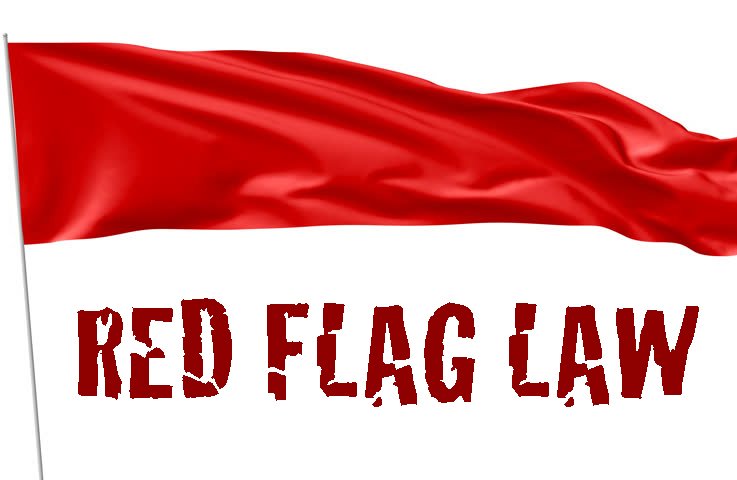Colorado’s “Red Flag” ERPO law will go into effect January 1, 2020. Leading up to this, the Colorado Attorney General’s office is responsible for developing law enforcement “best practices” via their POST (Peace Officer Standards and Training) Board. Those were just released this week and we’ve included the full text below. It should be noted that Colorado Attorney General Phil Weiser admitted during the debate of this legislation that there will be false claims, lack of due process, and collateral damage.
It’s important to note if the person being Red Flagged lives within city limits, it is the responsibility of the CITY police department to do this. If the person is in unincorporated county, it is the responsibility of the COUNTY Sheriff’s Office. This mean 246 different agencies across Colorado will have to figure out how to abide by these guidelines as well as find firearm storage space for confiscated weapons.
There is a very glaring piece missing from these best practices: what to do if someone refuses to comply. Some agencies, such as the Weld County Sheriff’s office and the El Paso County Sheriff’s office have already stated they will not take surrendered firearms or provide storage for them, but they will deliver the order so the person being accused can have the due process they deserve – and they wouldn’t have otherwise since the accused doesn’t know they have been Red Flagged until law enforcement is at their door.
Other agencies such as Douglas County Sheriff’s office have stated they will make sure every Red Flag ERPO order is accompanied with a search warrant, no matter who the petitioner is. Sounds like he’s ready for some legalized SWATTING in the name of his deputy who was killed doing the exact same thing he will soon be asking the rest of his deputies to do on potentially innocent people.
If you’re not familiar with how this law works, click here to read up on it. It’s downright frightening.
ERPO Model Policy: Acceptance, Storage, and Return of Firearms
CRS 13-14.5-101
Deputy Zackari Parrish III Violence Protection Act
Download the PDF here: ERPO Weapon Seizure Policy
I. Purpose:
To provide direction and guidelines for the proper handling and storage of firearms that are surrendered, or seized as a result of an Extreme Risk Protection Order. This policy will also deal with the proper procedure to follow for the return, or disposal of firearms after resolution of the ERPO has been achieved.
II. Scope:
This policy is available for use to all law enforcement agencies in The State of Colorado.
III. Policy:
Colorado Courts may order, pursuant to CRS 13-405.5-101, the surrender, or seizure of firearms. Officers will comply with all applicable Colorado Revised Statutes in regards to the acceptance, storage, and return of all firearms.
IV. Definitions:
A. Respondent- the person who is the subject of the Extreme Risk Protection Order.
B. Extreme Risk Protection Order- Known in this document also as an ERPO. Either a temporary, or continuing order granted pursuant to CRS 13-14.5-101.
C. Firearm- Any handgun, automatic, revolver, pistol, rifle, shotgun, or other instrument or device capable of discharging bullets, cartridges, or other explosive charges.
D. Antique firearm/Relic- any firearm (including any firearm with a matchlock, flintlock, percussion cap, or similar type of ignition system) manufactured in or before 1898.
E. Federal Firearms Dealer- A Federal Firearms Dealer is a person licensed in the United States, that enables an individual or company engaged in a business pertaining to the manufacture or importation of firearms and ammunition, or the interstate and intrastate sale of firearms.
V. Acceptance of a Firearm:
There are two methods by which you will be in the position to accept weapons based on the issuance of the temporary ERPO. They are by voluntary surrender by the respondent, as directed in the language of the temporary ERPO, or seizure by you, or your agency, during a lawful search pursuant search warrant, plain view search, or consent.
A. Voluntary Firearm surrender – According to orders set by the court in the temporary ERPO, the respondent has 24 hours to surrender all firearm(s) listed in the court order, or in their control or possession. The order will require surrender of the firearm(s) to law enforcement, or a federal firearms dealer for transfer, storage, or sale. They may also be transferred to a family member, if firearm is classified as an antique, or relic.
If the firearms are surrendered to law enforcement, you will give the option to the respondent of where they want the firearm(s) to go. The options allow for a transfer to a federal firearms dealer for storage or sale, or storage with law enforcement. Be advised, this law does not require a federal firearms dealer to accept the firearm, they have the option to refuse. If the respondent indicates no preference, officers will take custody of the firearm for storage at a secure law enforcement facility. If applicable, and set forth in the temporary order, you will also take custody the respondent’s concealed carry permit. You will be required to issue a property receipt accounting for every firearm surrendered to you, and the concealed carry permit, if applicable. You will issue a copy of the inventory of items seized to the respondent prior to termination of the contact. Additionally, you must ensure the original copy of the receipt is filed with the courts, and a copy is retained with your original report. The original receipt for the firearm(s) that have been surrendered must be submitted to the court within 72 hours.
If the firearm in question is an antique, or relic, you may give that firearm to a relative if: the relative does not live with the respondent, and you have verified through a criminal records check, CBI InstaCheck, that the relative is legally allowed to be in possession of a firearm. You must still complete a property receipt for the transfer from storing the firearm until relinquished to the relative. The relative retains a copy of the receipt, the original goes to the court within 72 hours, and a copy submitted with your report.
Once the firearm is in your possession, and proper documentation has been completed, the weapon will be secured, packaged, and stored in accordance with your agency’s existing policies regarding firearm storage, and in accordance with section IV of this policy. The ammunition and any magazines associated with the surrendered firearm(s) will not be taken.
B. Firearm Seizure – If you as the law enforcement officer are the petitioner, and a temporary ERPO is issued, the process begins with
the issuance of the order. Along with the search warrant obtained at the ERPO hearing, you serve the order to the respondent.
After the respondent has been properly served with the ERPO, you shall take custody of the respondent’s firearm(s) pursuant to the previously obtained search warrant, or other lawful search (plain view).
If applicable, and named in the warrant, you will also seize the respondent’s concealed carry permit.
Similar to the voluntary surrender, once you have seized all of the firearms in question, either seized through a lawful search, or in plain view, the respondent will have the option of the disposition of their firearms. They may choose transfer to a federal firearms dealer, or police custody. If they offer no preference the firearms will remain in police custody.
Also, just as with the voluntary surrender of firearm(s), upon completion of your search, a receipt shall be issued to the respondent articulating all items seized. The original will be filed with the court, and a copy filed with your original report. The original to court needs to be submitted within 72 hours.
If after the firearms are in the possession of your agency, another party claims verifiable title to the firearms, the firearms will be released to him or her. You must also confirm that party is eligible to be in possession of firearm(s), via a CBI InstaCheck. This transaction must also be documented, and notification made to the court.
As with the surrendering of weapons, when you are seizing the weapons by order or warrant, you will not seize any ammunition or magazines associated with the firearm(s).
VI. Storage of Firearms
Once the firearms are in the control and care of your agency, they will be stored, and maintained in a substantially similar condition that the firearm was in when it was surrendered. If the respondent makes no choice of the firearm’s disposition, your agency will store the firearm in a similar manner as if surrendered. You will follow your agency’s policy for safe and secure storage of a firearm i.e. unloaded, open action or cylinder secured by lock, or strap. If the respondent opts for the storage of the weapon(s) with a registered Federal Firearms Dealer, your agency will contact a dealer requesting storage on the respondent’s behalf, and assist to facilitate the transfer.
VII. Return of Firearms
If the ERPO or temporary ERPO is terminated, or expires without renewal, your agency, or agency in possession of the respondent’s firearm(s), have no more than three days to return the firearm(s) in your possession to the respondent. The three day window for the return of the firearm(s) will begin upon the completion of an InstaCheck by the Colorado Bureau of Investigation. Your agency will be notified of the termination of the order by the court. You will then, via a CCIC notification, request the InstaCheck be completed by Colorado Bureau of Investigation. CBI in turn will notify you, again via CCIC, of the status of the respondent.
If the firearm(s) are in the care and custody of a Federal Firearms Dealer, they too have the same window of three days to return the firearm(s) to the respondent. The three day window for the return of the firearm(s) will begin upon the completion of a an InstaCheck by the Colorado Bureau of Investigation.
If the firearm(s) was/were classified as an antique or relic, and transferred to the care and control of a relative, they are also required to return care and custody of the firearm(s) in no more than three days to the respondent. The three day window for the return of the firearm(s) will begin upon the completion of the InstaCheck by the Colorado Bureau of Investigation.
If applicable, the respondent’s concealed carry permit will be returned at the same time as the firearm(s).
Any firearm(s) surrendered by the respondent, or taken into custody by a lawful order, that remains unclaimed by the respondent, or lawful owner for at least one year from the date the temporary ERPO, or ERPO expired, whichever is later, becomes property of your agency. The firearm(s) will then be disposed of in accordance with your agency’s policy and procedure for disposal of firearms in police custody.
Full documentation of the disposition of the firearm(s) needs to be submitted to the respondent, to the courts, and in your case disposition report.
The Right to Keep and Bear Arms must always be defended!
Get a sticker for a donation to Rally for our Rights of $5 or more.
CLICK HERE TO GET YOURS
(other designs available)











